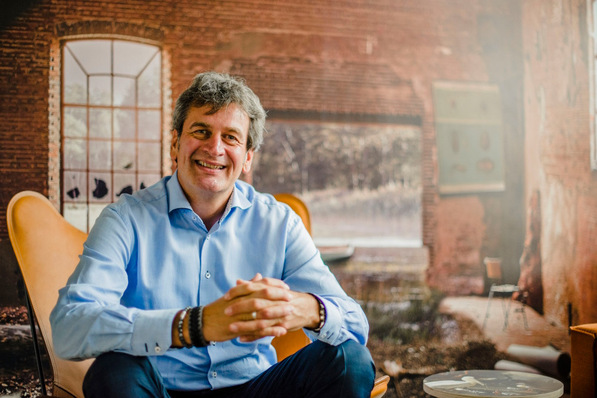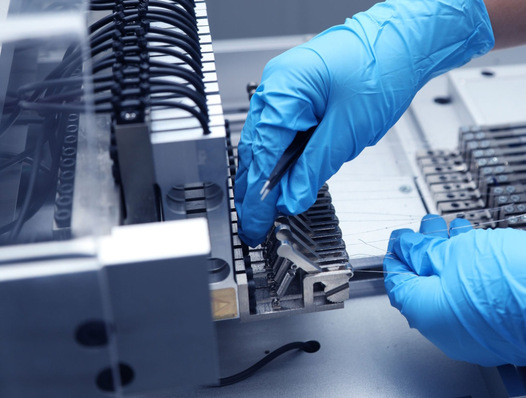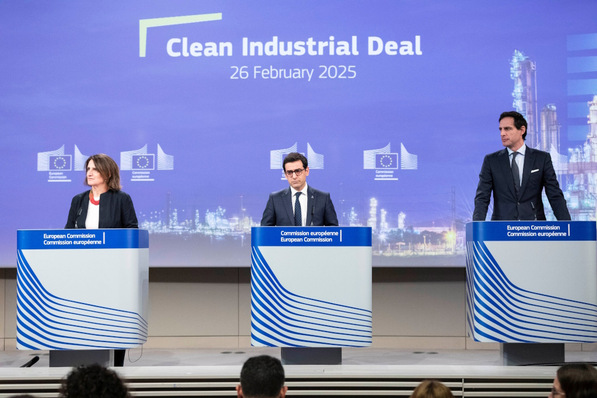Favourite among installation companies: For 2016, the panel manufacturer Heckert Solar was voted the most popular German solar installation company. In a poll by market researchers EuPD Research, the company was declared the champion of technicians, because of the outstanding quality of the panels as well as very good price and service.
In the last year, Heckert Solar has sold about 125 megawatts’ worth of solar panels, the majority in Germany. “This year we want to continue to grow,” head of sales Michael Bönisch says. “We look forward to finding out how the market will develop.”
Heckert Solar is also gaining in other European countries, for example in the Low Countries, Poland and France – and beyond the EU in countries such as Thailand, Jordan and Brazil, where they are beginning to make a name for themselves. However, the markets outside of Germany are still very volatile. Bönisch says for example: “We used to sell quite a lot to Italy. Very little is happening there at the moment. The UK also still has a great deal of growth potential.”
Broaden the product range
Until recently, Heckert Solar had pursued the strategy of becoming successful by offering a few off-the-shelf products. At the panel factory in Chemnitz the production robots are running full-tilt. Every 39 seconds a new 60-cell polycrystalline PV panel comes off the production line. While cells with three busbars have so far been predominant, Heckert Solar can now also process cells with four or five. Two of four production lines have already been converted. New stringers and laminators were installed, and the cross wiring process was also streamlined.
By using four busbars and new cells, the output of polycrystalline panels rose to 275 watts. Heckert Solar is offering these with a white or a black backing film, and the demand for Black Edition panels is steadily rising. “The market is showing us that our customers are increasingly asking for individualised products,” Michael Bönisch assesses. “That is why we are extending our product range.”
As of May, or June at the latest, Heckert Solar will produce monocrystalline panels for the first time. These will then also be available with a black backing film and produce outputs of between 275 and 280 watts. Heckert Solar can also process PERC cells.
Heckert Solar has dropped the smaller 54-cell panels from its product range, because there has no longer been sufficient demand for them.
Ready for measured growth
The Chemnitz-based manufacturer has 200 permanent staff, and is aiming to grow further. The nominal production capacity is currently at 300 megawatts per year, assuming full capacity utilisation and a seven-day rotating roster. Currently, production runs five days per week and the capacity is being well-utilised. Heckert Solar is pursuing a strategy of measured but steady growth. Of course, this calls for keeping up with the times and processing modern cells.
In order for the cells with four or five busbars to be processed in the automatic soldering machines and the laminator, management has made a seven-figure investment. The company is operating at a profit, so the current strategy has worked: Producing high-quality solar panels in Germany and selling them at a profit is possible – in spite of the difficult market situation. “About 75 percent of our turnover is generated directly with installation companies,” Bönisch confirms. “We also sell through electrical and specialist solar retailers, but that is a significantly smaller portion of our business.”
Customers are becoming more demanding; nobody is willing to wait anymore. In addition to product quality and price, logistical requirements are becoming increasingly important. The panels have to arrive at the building site on time and ready to be mounted. Special requests may also need to be accommodated. Heckert Solar supports installation companies by offering technical advice, planning services and being available for questions. Furthermore, they act as system providers and offer additional components such as inverters, racks, wiring and even storage units.
Special efforts to ensure quality
Project planners are still an important group of customers, even though compared to the US or Asia, the market for megawatt-scale installations is much smaller in Germany and Europe.
Michael Bönisch sees further potential customers among the new market actors: (Municipal) utilities or energy cooperatives who rely on German components. They demand quality and quality is what they get.
Heckert Solar goes to great lengths to improve the durability and reliability of their panels. The manufacturing process starts with the glass – 3.2 millimetres thick and covered in an antireflective coating. Then the front foil is applied. “Before we use the foils for building panels, we test their degree of cross-wiring and set up the laminators in such a way that the foils achieve an optimal degree of interconnectedness,” Carsten Diesing, technician and production expert at the Chemnitz factory, explains. In the automatic stringer machines the process of soldering the cell strings is especially gentle. Prior to soldering, the cells are heated up to minimise thermic tensions in the solder. The same is true for lamination. The strings then pass through buffers to cool down slowly. That way, the laminates cool slowly without the use of additional air showers and can be framed with as little tension as possible
Glued frames
First the excess foil is carefully cut away using a blade heated to 90 degrees centigrade. The 38-millimetre frame is glued to the laminate using a two-part adhesive. This produces an inseparable bond that holds even under high snow loads on the edge of the frame and prevents the ingress of moisture. Subsequently, the junction box is glued on. Again, the glue is given time to set properly.
Heckert Solar is also a shining example when it comes to their own energy supply: Right outside of the factory, there is a 1.1 megawatt greenfield installation, along with further arrays on the roofs. 70 percent of the solar electricity is used directly by the factory, covering more than a third of the entire energy demand. The rest is sourced as green energy from a utility. The laminators in particular require a lot of energy to come to their operational temperature, and vacuum pumps suck the air from out of the foil-cell sandwiches. The automatic soldering machines for soldering cell strings also require energy to be able to solder the cells cleanly and in a series.
At the end of the production line is the flasher which measures the electrical performance. A test bed for measuring electroluminescence is available for testing a representative sample of panels. Also, PID (potential induced degradation) tests are performed. Extensive testing equipment, such as a climate chamber, UV test bed, load testing rig, high-pot test bed, a set-up for thermography testing as well as long-term testing in their own proving array all ensure the quality of the panels. After all, they have to endure with the customer – in all kinds of conditions.
All specific measurements are registered under the serial number of each panel and are available to the customer. The panels weighing 17.7 kilograms are then sorted into transport crates and prepared for shipping. (HS)
Was this report useful to you? Then you might also read:
Or this one:
Beyond the low-point: Rising demand for solar panels
For more new PV modules, read here.







